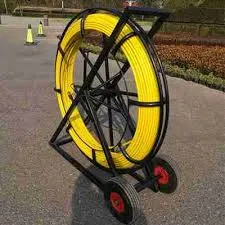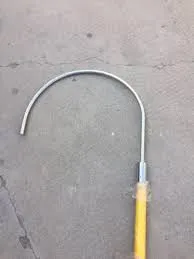
-
 Afrikaans
Afrikaans -
 Albanian
Albanian -
 Amharic
Amharic -
 Arabic
Arabic -
 Armenian
Armenian -
 Azerbaijani
Azerbaijani -
 Basque
Basque -
 Belarusian
Belarusian -
 Bengali
Bengali -
 Bosnian
Bosnian -
 Bulgarian
Bulgarian -
 Catalan
Catalan -
 Cebuano
Cebuano -
 Corsican
Corsican -
 Croatian
Croatian -
 Czech
Czech -
 Danish
Danish -
 Dutch
Dutch -
 English
English -
 Esperanto
Esperanto -
 Estonian
Estonian -
 Finnish
Finnish -
 French
French -
 Frisian
Frisian -
 Galician
Galician -
 Georgian
Georgian -
 German
German -
 Greek
Greek -
 Gujarati
Gujarati -
 Haitian Creole
Haitian Creole -
 hausa
hausa -
 hawaiian
hawaiian -
 Hebrew
Hebrew -
 Hindi
Hindi -
 Miao
Miao -
 Hungarian
Hungarian -
 Icelandic
Icelandic -
 igbo
igbo -
 Indonesian
Indonesian -
 irish
irish -
 Italian
Italian -
 Japanese
Japanese -
 Javanese
Javanese -
 Kannada
Kannada -
 kazakh
kazakh -
 Khmer
Khmer -
 Rwandese
Rwandese -
 Korean
Korean -
 Kurdish
Kurdish -
 Kyrgyz
Kyrgyz -
 Lao
Lao -
 Latin
Latin -
 Latvian
Latvian -
 Lithuanian
Lithuanian -
 Luxembourgish
Luxembourgish -
 Macedonian
Macedonian -
 Malgashi
Malgashi -
 Malay
Malay -
 Malayalam
Malayalam -
 Maltese
Maltese -
 Maori
Maori -
 Marathi
Marathi -
 Mongolian
Mongolian -
 Myanmar
Myanmar -
 Nepali
Nepali -
 Norwegian
Norwegian -
 Norwegian
Norwegian -
 Occitan
Occitan -
 Pashto
Pashto -
 Persian
Persian -
 Polish
Polish -
 Portuguese
Portuguese -
 Punjabi
Punjabi -
 Romanian
Romanian -
 Russian
Russian -
 Samoan
Samoan -
 Scottish Gaelic
Scottish Gaelic -
 Serbian
Serbian -
 Sesotho
Sesotho -
 Shona
Shona -
 Sindhi
Sindhi -
 Sinhala
Sinhala -
 Slovak
Slovak -
 Slovenian
Slovenian -
 Somali
Somali -
 Spanish
Spanish -
 Sundanese
Sundanese -
 Swahili
Swahili -
 Swedish
Swedish -
 Tagalog
Tagalog -
 Tajik
Tajik -
 Tamil
Tamil -
 Tatar
Tatar -
 Telugu
Telugu -
 Thai
Thai -
 Turkish
Turkish -
 Turkmen
Turkmen -
 Ukrainian
Ukrainian -
 Urdu
Urdu -
 Uighur
Uighur -
 Uzbek
Uzbek -
 Vietnamese
Vietnamese -
 Welsh
Welsh -
 Bantu
Bantu -
 Yiddish
Yiddish -
 Yoruba
Yoruba -
 Zulu
Zulu
Untranslated


TEL:
0086-311-88862036
Mar . 04, 2025 10:30 Back to list
Fiberglass Cable Duct Rodder
In the world of electrical grounding, the choice of a ground rod can significantly influence the safety and efficiency of an electrical system. Among various options, a 3/4 inch ground rod stands out due to its robustness and widespread applicability across residential, commercial, and industrial sectors.
Trustworthiness in a 3/4 inch ground rod also stems from its proven track record of reliability in emergency scenarios. When electrical faults occur, they possess the mechanical integrity to handle fault currents without succumbing to physical damage. A case in point involved a major metropolitan infrastructure in which a ground fault situation was mitigated rapidly, with post-incident analyses crediting the structural resilience of the 3/4 inch rods for preventing a potential electrical fire. For product selection, professionals are often guided by both theoretical models and practical validations. The emergence of advanced computational simulations has allowed for precision in determining the impact of ground rod dimensions on system stability. Simulation models have consistently shown that the thickness of a 3/4 inch rod supplies a significant margin of safety, ensuring that power systems remain operational under varied stress conditions. Moreover, trust in these grounding components is reinforced by regular laboratory tests that confirm their conductivity and mechanical robustness. Notable manufacturers have subjected their products to accelerated aging tests to demonstrate their longevity and reliability in extreme environmental conditions. In summary, choosing a 3/4 inch ground rod is a decision grounded in comprehensive expertise, affirming its place as a cornerstone of electrical safety protocols. Whether dealing with commercial, industrial, or residential installations, the proven effectiveness, regulatory compliance, and adaptable characteristics of these rods make them an indisputable tool in the arsenal of electricians and engineers. As technology and building designs evolve, the 3/4 inch ground rod remains a steadfast component, trusted to deliver reliable performance and longevity.


Trustworthiness in a 3/4 inch ground rod also stems from its proven track record of reliability in emergency scenarios. When electrical faults occur, they possess the mechanical integrity to handle fault currents without succumbing to physical damage. A case in point involved a major metropolitan infrastructure in which a ground fault situation was mitigated rapidly, with post-incident analyses crediting the structural resilience of the 3/4 inch rods for preventing a potential electrical fire. For product selection, professionals are often guided by both theoretical models and practical validations. The emergence of advanced computational simulations has allowed for precision in determining the impact of ground rod dimensions on system stability. Simulation models have consistently shown that the thickness of a 3/4 inch rod supplies a significant margin of safety, ensuring that power systems remain operational under varied stress conditions. Moreover, trust in these grounding components is reinforced by regular laboratory tests that confirm their conductivity and mechanical robustness. Notable manufacturers have subjected their products to accelerated aging tests to demonstrate their longevity and reliability in extreme environmental conditions. In summary, choosing a 3/4 inch ground rod is a decision grounded in comprehensive expertise, affirming its place as a cornerstone of electrical safety protocols. Whether dealing with commercial, industrial, or residential installations, the proven effectiveness, regulatory compliance, and adaptable characteristics of these rods make them an indisputable tool in the arsenal of electricians and engineers. As technology and building designs evolve, the 3/4 inch ground rod remains a steadfast component, trusted to deliver reliable performance and longevity.











